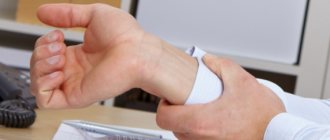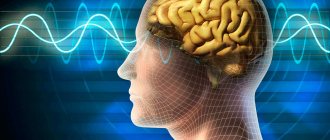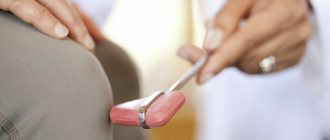The human body consists of a huge number of cells. They, in turn, are combined into larger units - tissues and organs. Organ systems are built from the latter, and from them the organism is formed. And at all levels, various interactions and complex biochemical reactions are constantly taking place. In order for all this to develop harmoniously from a fertilized egg and function smoothly, a special work scheme is required for all levels. Its role in the body is performed by organized genetic information.
It is the hereditary material that is entrusted with the task of preserving data about the general appearance of a person, the structural features of individual organs, the principles of regulation with the help of hormones, and even how proteins should be assembled. All data is recorded as a sequence of structural units - nucleotides. They, like the letters of the alphabet, form word groups that perform specific functions. Each group is called a gene. Together they form the DNA molecule. If you look at a higher level, you will notice that all the hereditary material in the form of chains of deoxyribonucleic acid is concentrated in special formations called chromosomes.
A person normally has 23 pairs of them. In each pair, information is stored in two copies. This is necessary so that when genetic information is transferred, each daughter cell receives its own copy. One pair of chromosomes is different from the rest and is responsible for determining sex. If it has two identical large chromosomes (XX variant), then the organism is female. If there is one large and one small chromosome, then we are talking about the male sex (XY variant). These two different chromosomes are called sex chromosomes. The remaining 22 pairs are found in all organisms, regardless of gender. They are called autosomes.
Anomalies of genetic material
Hereditary material consists of a huge number of nucleotides that form genes. Moreover, in each gene the nucleotide sequence is strictly defined, since it must code for a specific protein. In addition, the genes themselves, when forming chromosomes, are also arranged in a fixed order. Thanks to the preservation of this order, the body can function, and scientists can quickly and accurately indicate to each other which gene we are talking about.
Ideally, the system works without the slightest glitch, and genetic information is always transmitted unchanged. However, in practice, a large number of structural units and constant exposure to various factors (for example, ionizing radiation) leads to the fact that various anomalies arise from time to time. In particular, individual sections of the DNA sequence can be copied to a new location. In this case, they talk about duplication. If, instead of creating a new copy, part of the original chain was moved, then the modification is called translocation. In addition, sometimes part of the sequence is simply lost, removed from the genetic material. In this case, the change is called a deletion.
Since the interactions in the body have been honed over many millennia of evolutionary development, the result is a very coherent system. And anomalies, even the smallest ones, can cause an imbalance. In this case, one or another disorder develops in the body. If the cause is at the level of genes, then they speak of gene diseases. If an extra copy of a chromosome is lost or, on the contrary, gained, such disorders are called chromosomal diseases.
What is microdeletion syndrome?
The most minor changes (aka mutations) are called point changes. Their appearance affects a few units of genes. In some cases, the disorder relates to just one gene. However, if it provided the production of an important protein, the consequences for the entire body could be very serious. Such pathological changes belong to the group of microdeletion syndromes.
Each such disease is caused by a small change in genetic material that occurs in a strictly defined location. The exact mechanism of occurrence of such disorders has not been established to date, which does not prevent scientists from studying their effects on the body.
Thus, it was found that the development of the syndrome in this case can occur in several different ways. In particular, a number of diseases are characterized by the participation of oncogenes. In other cases, the effect of the deletion itself is superimposed by the effect of chromosomal imprinting and possible uniparental disomies.
The incidence of most microdeletion syndromes is extremely low: about 1 case per 50-100 thousand newborns. A set of clinical signs is usually expressed clearly. In order to make a diagnosis, only a combination of symptoms is enough. However, with this approach it is impossible to accurately predict the health of the offspring, so often, along with checking the usual signs, a molecular genetic diagnosis of the proband and his relatives (usually parents, in some cases also requires analysis of the genotype of brothers, sisters, aunts, uncles, and so on) is carried out.
Pathological manifestations vary greatly. In particular, their manifestation is determined by how much of the genetic material was lost as a result of the deletion. In addition, in some cases, the role from which parent the mutation was received (the influence of chromosomal imprinting) plays a role. A good illustration of the latter situation is the pair of Prader-Willi and Angelman syndromes. They are both caused by the presence of a deletion on chromosome 15. However, due to the different mechanism of action when transmitted from different parents, the clinical picture of these diseases differs significantly.
Features of education and adaptation
As a child with this pathology grows up, the symptoms change, become less intense, or, on the contrary, more intense, old ones may disappear and new ones may appear.
The prospects for the patient's condition largely depend on the conditions that surround the patient. A friendly environment, an atmosphere of love and affection gives the patient a chance to become at least partially an independent person. With proper care, the symptoms of the disease become easier over time. Life expectancy for people with Angelman syndrome is average. It is necessary to remember about regular examinations, proper nutrition, and compliance with treatment conditions.
Educating a child at school requires the use of inclusive programs. However, in Russia and the CIS countries today these programs are not widely practiced. Such children need a special approach, including learning to concentrate. An important requirement is also the ability of the educational institution to provide medical assistance during a seizure.
In our society at the moment, people with chromosomal disorders are treated with caution and fear. In recent years, various events have been actively carried out aimed at disseminating knowledge about such diseases, as well as at developing tolerance in society.
Positive effects of some deletions on viability
Small deletion changes can have a significant impact on the survival of the organism. For example, the loss of the gene encoding the CCR5-δ32 protein causes immunity to the human immunodeficiency virus. Scientists suggest that this mutation first appeared about 2.5 thousand years ago and over time spread across Europe.
The current distribution is uneven. According to statistics, about 10% of residents of European countries are resistant to HIV. However, in the Scandinavian countries this figure reaches 14-15 percent. Russians and Finns demonstrate a 16 percent level of resistance. For Sardinia, however, the frequency is a modest 4 percent.
A number of scientists have hypothesized that such a spread is determined by the bubonic plague epidemics that took place in the medieval period. It is likely that a mutation in the gene causes increased resistance to this disease. Therefore, in the countries where the Black Death took place, more people with this genotype survived.
The effect of deletions on the ability to fertilize
Deletions that occur on normal chromosomes (autosomes) can in some cases be compensated for by a normal copy of the gene. However, when it comes to sex chromosomes, especially the Y chromosome, the situation changes.
First of all, it should be noted that the genes localized on it do not have a second copy. With a normal number of chromosomes in the set, the Y chromosome turns out to be extremely vulnerable. Combined with a small number of genes, this leads to serious consequences for each change. Of particular interest are mutations affecting the AZF locus and the SRY gene.
Causes
The main reason for the development of the syndrome is a change or complete absence of one of the fragments of chromosome 15.
The risk zone includes children whose relatives suffer from the following deviations:
- the presence of additional chromosomes in the genetic code;
- chromosome inversion - one section of the chromosomes is inverted, and part is lost, and the genes are arranged in the opposite order;
- when two sections of the Y chromosome have swapped places, while some of its fragments may be completely absent
- loss of chromosomal fragments;
- joining 1-2 parts of one chromosome to another;
- the presence of extra genes;
- the structure of a chromosome is ring-shaped when its ends are closed.
Abnormalities of the SRY gene (Sex-determining Region Y)
The SRY gene, as its name suggests, is responsible for a very important function. It is its presence in the chromosome set that triggers the process of formation of the body according to the male phenotype and stimulates the development of the corresponding genital organs.
The presence of even a small deletion in this gene disrupts the mechanism of sex differentiation. As a result, with a normal karyotype of 46XY, the embryo begins to develop as a female organism. For this reason, the SRY gene accounts for the largest number of mutations associated with underdeveloped gonads. In addition, changes in this gene cause sex inversion.
General information
The syndrome is named after Harry Angelman, a British pediatrician who in 1965 described cases of this disease in three unrelated boys. The bouts of unreasonable laughter, the puppet's jerky gait and always happy appearance caused Angelman to associate it with the painting "Boy Puppet" in the Verona Museum, so the syndrome was initially called "Happy Puppet Syndrome."
The syndrome was renamed for ethical reasons when describing the course of the disease by Jamie Frias and Charles Williams in 1982.
The syndrome occurs with equal frequency in both sexes. The prevalence is 1 in 10-30 thousand newborns, but a significant number of children with this disease, as a result of the lack of a correct diagnosis, are observed as having epilepsy or suffering from behavioral disorders and delayed speech development.
Mental retardation is observed in 4.8% of patients.
Abnormalities of the AZF locus
There is also a special region on the Y chromosome that controls the process of sperm production. This is what determines how effective spermatogenesis will be. In addition, the condition of this area affects the properties of sperm, such as the total number in the ejaculate, the ability to move, the presence of structural changes and the ability to fertilize. Only in the presence of well-formed motile sperm can male genetic material be delivered to the egg. In other words, a man’s ability to have children depends on the state of this small section of genetic code.
If there are abnormalities in the AZF locus, the process of sperm production is disrupted. As a result, azoospermia and oligozoospermia may develop. With these pathologies, the ejaculate either does not contain sperm at all, or their number is greatly reduced.
The AZF locus itself is divided into three parts with specific tasks. They are named by adding a suffix: AZFa, AZFb and AZFc. The resulting deletion can remove a fragment of a separate part, or its entirety, or capture two regions at once. With complete removal of the AZF, severe damage to spermatogenesis develops. Partial deletions can manifest themselves in different ways. At the same time, the degree of manifestation of pathology is influenced by the size of the lost fragment and its location in the locus. Therefore, for prognostic purposes, it is extremely important to know where the deletion occurred. In addition, this information can be used for proper family planning and in vitro fertilization.
If the deletion removed the entire locus or any of the regions with a/b indices, then the man cannot produce viable sperm. If the deletion can be described by the formula AZFb/AZFb+, then azoospermia develops due to severe disturbances in the process of sperm formation.
Deletions of the AZFc region lead to the manifestation of pathological symptoms of varying severity. It is also possible to develop oligospermia, which in principle allows conception. In 50-70 percent of the total number of such cases, it is possible to obtain sperm for further use in artificial insemination methods. Partial deletion of the AZFc region can be expressed in the form of various disorders from normozoospermia to azoospermia.
All deletions in the AZF locus that cause one or another pathological situation are the causes of male infertility. Determination of the mutation is possible by histological analysis of seminal fluid. In this case, it is necessary to stop sperm maturation or detect immature sperm. To obtain accurate data on deletions in the AZF locus, PCR of 6 markers is used, which relate to individual sections of the locus.
Angelman syndrome
With Angelman syndrome, a characteristic set of pathological changes develops. In particular, there is a delay in psychological development, accompanied by problems with sleep, frequent chaotic movements (mostly with the hands), constant smiling and laughter.
Pathology develops in the absence of certain genes located on chromosome 15. In this case, a mandatory condition is the transfer of a mutant copy of the gene from the mother. If the damaged chromosome is inherited from the father, Prader-Willi syndrome will develop. The karyotype is usually normal (46XX and 46XY for girls and boys, respectively). Various independent studies indicate that the disease is associated with the UBE3A gene, which normally produces an enzyme component in a complex protein degradation system.
The frequency of occurrence of the syndrome is approximately 1 case per 10-20 thousand newborns (indicators differ among different scientists).
The characteristic features of patients with Angelman syndrome are the following:
· nutritional problems that begin during breastfeeding, as children do not gain weight well (prevalence of the symptom is about 75 percent);
· inhibited development of general motor skills, that is, children begin to sit and walk later than others;
· All children are characterized by speech development disorders;
· patients usually understand more than they are able to express using a limited vocabulary;
· often the disease is accompanied by attention deficit and hyperactivity;
· problems with learning in a regular school;
· 80% of patients develop epilepsy, accompanied by disturbances noticeable on electroencephalography; Scientists believe that epilepsy is a secondary (symptomatic) disease.
· performing unusual movements, which include random chaotic movements of the limbs, small tremors;
· occurrence of attacks of laughter in the absence of visible reasons;
· characteristic walking on stiff legs, which gave rise to comparisons with puppets;
· a head reduced in comparison with the average size, often with a flattened occiput;
· in some cases, there are peculiar memorable facial features - a wide mouth with sparsely spaced teeth, a protruding chin with a protruding tongue;
· various sleep disorders;
· in approximately 40 percent of cases, strabismus develops;
· about 10% of patients also suffer from spinal curvature;
· high temperatures are perceived with increased sensitivity;
· the greatest comfort is usually achieved in water (for example, in a bath)
As a rule, the syndrome is determined using molecular genetic diagnostic methods using chromosome 15. An indication for testing for a newborn is decreased muscle tone (hypotonia), a noticeable delay in the development of speech and fine motor skills. In addition, the disease may be indicated by small tremors, jerky, erratic movements, and walking on stiff legs.
The analysis can be carried out through fluorescence in situ hybridization, DNA methylation in the 15q11-q13 region. You can also check for mutations in the imprinting center and in the UBE3A gene.
Since the disease is caused by a genetic disorder, there is no adequate and effective treatment for it. Carrying out therapeutic measures, such as massage for patients with hypotension, can improve the quality of life.
Photo and video materials on the topic
Video, as well as a gallery with photos of children and adults diagnosed with Angelman Syndrome:
Child with doll syndrome Adult with Angelman syndrome
Prader-Willi syndrome
This disease is determined by the same genetic mutation as for Angelman syndrome. The difference is that in this case, a violation of the hereditary material occurs on the father’s side. The karyotype is normal (46XX or 46XY). The prevalence (1 case per 12-15 thousand newborns) approximately coincides with the prevalence of Angelman syndrome.
Characteristic signs of Prader-Willi syndrome are the following symptoms:
· in the prenatal period, low fetal mobility;
· incorrect position of the fetus is common;
Possible hip dysplasia;
· by the age of two, a tendency to eat a lot (more than normal) may appear, which leads to obesity;
· low muscle tone (hypotonia), combined with impaired coordination of movements;
· feet and hands are usually small, and short stature is also characteristic;
· formation of strabismus and scoliosis;
· note increased drowsiness;
· bone density is at a lower level than in healthy people;
· saliva is thick, teeth are usually in poor condition;
· insufficient function of the gonads, ultimately causing infertility;
· later puberty compared to peers;
· patients learn to speak later and lag behind in mental development;
· external signs include a pronounced bridge of the nose, a narrow and high forehead, almond-shaped eyes, and narrow lips.
In most cases, a person with the mutation will have one to five signs of the disease.
Diagnosis of the disease is carried out by molecular genetic testing, for which children with reduced muscle tone are referred. Often, instead of a correct diagnosis, the more common “Down syndrome” is determined. An experienced geneticist who often encounters manifestations of Prader-Willi syndrome is able to diagnose it based on a set of external signs.
Improving the condition and life of patients
Angelman syndrome is a genetic disease; today there are no methods for restoring chromosomal abnormalities, and treatment is impossible. However, there are a large number of ways to reduce symptoms, which makes the condition of such people easier.
In each specific case, the rehabilitation program is developed individually, according to the symptoms and condition of the individual patient. Experts identify four main areas of therapy:
- Taking antiepileptic drugs and anticonvulsants . These medications help control and reduce the frequency of attacks caused by the disease.
- Therapeutic exercise – helps develop fine motor skills and solve other problems of the musculoskeletal system. Children with chromosome abnormalities develop more slowly than their healthy peers, and this requires patience on the part of the family.
- Sign language . Patients with marionette syndrome speak little, but use sign language quite successfully. Education should start from a very early age.
- Behavioral therapy . This program allows you to provide correct and effective education to children who have disabilities and will help cope with hyperactivity and attention deficit.
Many doctors note the similarities between children suffering from autism and Angelman syndrome. American scientists have achieved success in treatment, namely the use of intravenous injections with the hormone Secretin. The positive effect is expressed in reducing signs of unwanted behavior, as well as improving communication skills.
Miller-Dieker lissencephaly syndrome
In Miller–Dieker lissencephaly syndrome, the cause of pathological changes is the deletion of certain genes in the 17p13 locus. In this case, the central nervous system suffers the most. Along with lissencephaly (smoothing of the convolutions located on the surface of the brain due to disruption of the PAFAH1B1 gene), there is a reduction in the number of cortical layers. If normally there are 6 of them, then in patients only 4 can be found. Associated signs are a noticeable change in facial shape. In addition, patients grow slowly. Attempts to integrate into society are complicated by multiple pathologies of the heart, gastrointestinal tract, and kidneys. If the disease causes a deletion of the 14-3-3 epsilon gene, the syndrome becomes much more severe.
Aniridia
With aniridia, the normal structure of the eye is disrupted: the organ of vision lacks the iris. In addition, concomitant pathological changes often develop, such as macular hypoplasia and optic nerve hypoplasia, corneal changes, and cataracts. Visual acuity noticeably drops, attempts at correction do not bring significant results. Photophobia and horizontal nystagmus develop. In some cases, congenital glaucoma appears.
The cause of the disease is a dysfunction of the PAX6 gene from the short arm of chromosome 11. The protein it encodes leads to the launch of a number of processes that control the process of proper formation of the visual organs and a number of other structures. It is noteworthy that the gene is very conservative: the difference between the forms of PAX6 in humans and zebrafish is less than 5%, despite the divergence of evolutionary lines approximately 400 million years ago.
The disease belongs to the group of autosomal dominant pathologies. In the case of homozygosity for a mutant copy of the PAX6 gene, the negative effect on the body increases, which causes multiple disturbances in the functioning of the visual organs. In addition, the central nervous system is affected, which leads to death.
Treatment is aimed at relieving symptoms. To visually imitate the pupil, it is recommended to use specially colored lenses. It is possible to restore the pupil through reconstructive plastic surgery.
Treatment methods
Angelman syndrome in children requires symptomatic and supportive therapy, but the disease cannot be completely cured. Tests have been carried out for decades, but no genetic treatment or medications have yet been found. The general physical health of children with such disabilities is good, so constant pediatrician care and immunization are recommended.
Angelman syndrome in children often manifests itself in the form of seizures that can be controlled with anticonvulsants:
Clonazepam
This drug is available in tablet form and contains as the main component a substance of the same name. The medication belongs to the group of anticonvulsants and has a sedative, hypnotic, muscle relaxant and antiepileptic effect. The medicine is prescribed to patients suffering from epileptic seizures.
The dose of the medicine is calculated at 0.02 mg per 1 kg of body weight. The course is individual. The drug should not be prescribed for depression of the respiratory center, coma, shock, severe depression, lactation and pregnancy. The medicine must be prescribed by a specialist, as it has many side effects. Average price 100 rub.
Convulex
This medicine is available in several forms: injection solution, syrup, capsules. The main component of all forms of the drug is sodium valproate. It is thanks to this substance that the medicine belongs to the group of antiepileptic drugs that have an anticonvulsant effect.
The dosage and course of treatment are selected individually for each patient.
The medicine is indicated for all types of generalized seizures. You cannot prescribe medication for porphyria, liver and pancreas diseases, thrombocytopenia, diathesis. Failure to follow the doctor's recommendations can cause the following symptoms: hepatitis, vomiting, anorexia, nausea, constipation, pancreatitis, loss of consciousness, ataxia, dizziness. The cost of the drug varies within 500 rubles.
Be sure to prescribe the intake of vitamin complexes, including substances of groups B, C, D and E. With their help, it is possible to strengthen the immune system:
Multi-tabs
This vitamin complex is presented in a whole series of preparations that are selected according to the patient’s age. Presented in the form of syrup and chewable tablets. Each type of drug contains all the vitamins and minerals necessary for the proper development of the child.
Multi-tabs helps strengthen the immune system, normalize the functioning of the heart and blood vessels, supports the functions of the nervous system, and promotes the proper formation of bone tissue. This complex has no contraindications; in rare cases, allergic reactions may occur. The average price of the drug varies within 500 rubles.
Kinder Biovital
This complex includes about 9 vitamins and an amino acid, which help the child to develop correctly from the first days of his life. The composition includes lecithin, which is recommended for patients with increased excitability. Available in gel form, daily dose 1 tsp. The average cost of a vitamin premix varies between 500 rubles.
Diphenhydramine
This medicine is part of the first generation of antihistamines. The main component is a substance of the same name, which has anticholinergic, antihistamine, sedative, hypnotic, antiemetic, antiallergic and local anesthetic effects. The medication relieves swelling, increases capillary permeability, itching and hyperemia.
The daily dose of the drug is 2-5 mg. Take once, the course is individual. The medicine cannot be prescribed for children under one year of age if the active ingredient is intolerant. Failure to follow the recommendations may provoke the development of the following symptoms: fatigue, drowsiness, weakness, tremors, convulsions, confusion. The average price of the drug is 200 rubles.
Melatonin
This is a sleep hormone that is produced in the human body by the pineal gland. In poor lighting, the hormone is better produced, so at night its concentration in the body reaches 70%. If there is a deficiency of the hormone in the body, it is additionally administered in the form of tablets, which provide a hypnotic effect. The dose is selected individually.
They cannot be prescribed to patients with autoimmune diseases, lymphoma, lymphogranulomatosis, leukemia, diabetes, myeloma. Violation of the doctor's instructions threatens the development of the following symptoms: headache, depression, stomach pain. The average price of the drug varies within 700 rubles. To normalize bowel function, mild laxatives are prescribed.
Fitolax
This is a laxative of plant origin. With its help, it is possible to normalize bowel movements and has a positive effect on the digestive system: it reduces inflammation, kills pathogens, and removes toxins.
The drug is taken immediately before bed, 1 tablet, then bowel movements will begin in the morning. The drug is also available in the form of tea, which should be drunk in the morning and evening. The duration of therapy is 14 days. The average cost of the drug is 150 rubles.
Bifiform
The drug is available in capsule form and is intended to normalize intestinal flora. The main component is lactic acids. The drug is approved for children from 2 years of age, take 2-3 capsules per day.
No contraindications or adverse events were identified during the studies. The average price of the drug is 350 rubles.
Scopolamine
Angelman syndrome in children often provokes increased salivation, which can be suppressed by taking Scopolamine. Available in powder form, which contains a substance of the same name. The medicine has antiemetic, sedative and antispasmodic effects. take the solution orally at 0.25-0.5 mg. The duration varies from person to person.
Exceeding the dose can provoke the following symptoms: decreased blood pressure, intestinal atony, tachycardia, drowsiness, dizziness.
Recently, new directions in the treatment of the syndrome have emerged that help restore the dendritic processes of nerve cells. Thus, the antibiotic Minocycline hydrochloride, which is part of the tetracycline group, performs similar functions.
It helps change the structure of hippocampal nerve cells, improves memory and adaptive behavior. To help your child cope with joint problems, physiotherapy is recommended.
Paraffin applications
With their help, it is possible to quickly relieve inflammation from the joints. The paraffin is melted in a container over a fire, left to cool slightly to room temperature and applied in a thin layer to cleansed skin, wait a couple of minutes, then apply another layer. Then cover the application with film and leave for 30 minutes, the course of therapy is at least 10 sessions.
Massage
Better. If it is carried out by a qualified specialist. With its help you can relieve pain, improve blood flow, and restore joint mobility. The minimum course is 10 sessions. The average price of 1 session is 200-250 rubles.
Magnetotherapy
Exposure to an electromagnetic field helps relieve pain, improve blood circulation, and relieve swelling. The duration of the procedure is on average 15-30 minutes. A course of 10-15 sessions, conducted no more than 3 times a week.
Electrophoresis
This is one of the types of electrotherapy, which involves the impact of a constant tone on the body, with the help of which drugs are delivered to the site of the disease.
The procedure is carried out in a special room, the session lasts up to half an hour. On average, there should be 10-15 sessions. In most clinics the service is completely free.
Features of raising a child
If the child is provided with proper care, then over the years all clinical manifestations may completely disappear or change, replacing one another. Everything directly depends on the atmosphere in which the child will grow up, because only the special attitude of adults will help him adapt.
Adults should remember that under no circumstances should they tell a child that he is sick, that he is somehow different from his peers. A child with the syndrome, like any other child, needs love, affection, and understanding from the people who constantly surround him.
Adults will have to put in a lot of effort and patience to instill in a child the most basic principles of behavior and make him independent. For children with this diagnosis, simple things can be difficult.
If you strictly follow all the doctor’s recommendations, regularly work with your child, and devote all your time to him, then he will live a full life, not much different from the life of his peers who do not suffer from the syndrome.
DiGeorge syndrome
With DiGeorge syndrome, patients have a congenital form of aplasia of the parathyroid glands and thymus. It is a type of idiopathic isolated hypoparathyroidism. It is quite rare.
In this disease, pathological changes concern the parathyroid (parathyroid) glands, which exhibit dysgenesis or agenesis. The thymus gland (thymus) is absent from birth. As a result of the combination of such pathologies, a sharp decrease in the number of T-lymphocytes occurs, and immunological deficiency is formed. In addition, this syndrome is accompanied by the formation of congenital anomalies of large vessels.
The disease is autosomal and is determined by the presence of a mutation on chromosome 22. In most cases, the cause is a sporadic deletion of 22q11 (less commonly, microdeletion of 22q11.2). Inheritance occurs according to the dominant principle and is not related to gender. Some authors do not agree with this characterization and argue in favor of an autosomal recessive type with varying expressiveness.
The disease is characterized by disruption of the process of embryogenesis of 3-4 gill pouches, which leads to disruption of the thymus and parathyroid glands.
In the clinic, the most constant symptoms are candidomycosis and hypoparathyroidism, quite often accompanied by disruption of the formation of the mouth, nose and ears.
The thymus remains undeveloped due to developmental disorders in the embryonic period. The thymic epithelium does not support the normal development of T cells. As a result, a specific form of immunodeficiency is formed, in which the humoral immune response and the response at the cellular level are weakened. If a child has such a pathological disorder of immunity, he will have increased sensitivity to infections of bacterial, viral and fungal origin.
The syndrome can occur in the form of a genetically determined absence of the parathyroid glands or isolated insufficiency of the parathyroid glands - accompanied by hypocalcemic seizures that begin from birth. Immunological deficiency leads to the appearance of various infectious diseases. Typically, a combination of symptoms causes heart failure. In addition, infectious diseases cause death.
Diagnosis of the syndrome involves identifying pathologies typical of the syndrome: distortions of the shape of the face and skull, the presence of immunological deficiency, thymic aplasia, dysgenesis or agenesis of the parathyroid glands. The most pronounced manifestations of the disease are candidomycosis and hypoparathyroidism.
Forms
Angelman syndrome is associated with four types of genetic mutations:
- A newly emerged chromosomal mutation, which is associated with the loss of a chromosome section at locus 15 q11 – q13. This mutation is the cause of about 80% of all cases of the disease.
- Unipaternal disomy, which is associated with the loss of the maternal locus (lack of maternal genetic material). This option is rare (about 5% of all cases).
- A defect in a number of genes subject to genomic imprinting (GI). These defects occur in 2-4% of patients as a result of a direct violation of imprinting (differences in the conversion of gene information into protein or RNA, which depend on the origin of the gene). Most often occurs as a result of loss of the GI regulatory center. GI defects without loss of the regulatory center are the result of a spontaneous mutation, the repetition of which is very rare.
- A spontaneous mutation in the maternal copy that causes the brain copy of the UBE3A gene to fail to transform. This gene encodes the activity of ubiquitin ligase (an enzyme involved in the complex process of protein breakdown). Deficiency of this enzyme is one of the molecular mechanisms of the syndrome.
It is currently not possible to establish the form of the disease in 7-9%.
Retinoblastoma
Retinoblastoma is a malignant tumor of the retina. The development process usually begins in childhood, and the starting material is tissue of embryonic origin. The peak phase occurs at two years of age.
Almost all known cases are detected during the first 5 years of life.
The cause of the disease in most cases is a mutation in the genetic material. In this case, it is necessary to have a genetic condition due to the presence of a mutant version of the Rb gene, obtained by inheritance. The second tumor-causing mutation occurs in the retinoblast.
There is a small chance that parents who have had retinoblastoma may have children with no pathological changes.
There are unilateral and bilateral cases of retinoblastoma. According to statistics, for the bilateral form the probability of hereditary origin is noticeably higher.
Symptoms of the disease include eye pain, glowing pupils, and loss of vision. It is very, very difficult to identify them in a small child.
Diagnosis usually takes the form of an examination under anesthesia using ultrasound, CT and MRI. A fairly common procedure is a red bone marrow biopsy and spinal puncture. There are 5 groups based on the severity of symptoms.
There are two effective treatment methods. With cryotherapy and photocoagulation, it remains possible to preserve both vision and the eye itself. Complications with their use rarely occur. However, if a relapse occurs, the treatment will need to be repeated in the same form. Typically cryotherapy is used in cases where the anterior retina is damaged. For the posterior region, photocoagulation appears to be the preferred option.
Copying and support
Finding out that your child has Angelman syndrome can be overwhelming. You may not know what to expect. You may be concerned about your ability to care for your child's medical problems and developmental disabilities. There are resources that can help.
Working with the team
Find a team of doctors and therapists you trust to help you with important decisions about your child's care and treatment. These professionals can also help you find local resources.
Consider a support group
Connecting with other families facing similar challenges can help you feel less alone. Ask your child's doctor for information about local support groups and other helpful organizations.










